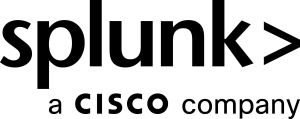Featured: SOAR
Tuning SOAR to optimize performance
As you create more use cases for Splunk SOAR, it is important that the platform can scale to meet the demands of the automation need. To help, this article explains how to tune two critical microservices and how to tune Postgres and nginx/uwsgi (web server gateway interface).
Featured: Splunk Platform
Changing chart colors in Dashboard Studio with Matplotlib colormaps
You've gathered your data, created your queries, and set up a great dashboard. But the colors in your charts aren't exactly what you're looking for. You might want to adjust them for a number of reasons. This article gives you some easy options for updating your plotted fields.
Featured: Observability Cloud
Sending Splunk Observability Cloud alerts to a Webex space
If you're already using Splunk Observability Cloud and Webex Messaging, you can bring alerts directly into the conversations you’re already having. It’s a simple way to improve visibility and reduce response times. Learn how with this article.
Resources for Splunk Program Managers
The Splunk Success Framework
Accelerate and increase the value you derive from your data with Splunk software using the Splunk Success Framework (SSF), a flexible collection of best practices for setting up Splunk Enterprise or Splunk Cloud Platform as a program.
Data Ingestion and Application
Data Descriptors
Bring data to every question, decision, and action across your organization with comprehensive guidance for getting data in and applying data to your key use cases.
Get the latest
New Articles
- Platform
- Turn data into doing to unlock innovation, enhance security and drive resilience.
- Security
- Protect your business and modernize your security operations with a best-in-class data platform.
- Observability
- Solve problems in seconds with the only full-stack, analytics-powered, and OpenTelemetry-native observability solution.
- Splunk Success Framework
- The Splunk Success Framework (SSF) is a flexible collection of best practices for setting up your Splunk software implementation as a program.
- Data Descriptors
- The data sources in use at your organization can all be linked to common use cases. Get recommendations from Splunk experts and then start getting answers from your data.
- Malware data
- Application data
- Application server data
- Authentication data
- Backup data
- Vendor-specific data
- Endpoint detection and response (EDR) data
- Intrusion detection data
- Load balancer data
- Email data
- Network communication data
- Patch management data
- Physical security data
- Web proxy data
- Change data
- Configuration management data
- IP address assignment data
- Vulnerability detection data
- Web server data
- Network resolution data
- Linux and Unix
- Okta
- SAP
- Zscaler
- Zoom
- Zeek
- Websense
- VMware
- CrowdStrike
- Carbon Black
- Kubernetes
- Check Point
- Fortinet
- Salesforce
- Symantec
- Palo Alto Networks
- Trend Micro
- Tenable
- GitHub
- Atlassian
- AppDynamics
- Dell
- Syslog
- Apache
- Amazon
- Cisco
- Microsoft
- JupiterOne
- GitLab
- Mac OS
- Docker
- Network firewall data
- MOVEit
- Skyhigh Security
- CyberArk
- OpenAI
- Adobe
- NETSCOUT
- Nagios
- Tanium
- Gigamon
- Fabrix.ai
- Financial data
- Medical device data
- Mobile device data
- User activity log data
- Network sessions data
- Electronic data interchange data
- Operational technology data
- IoT and industrial IoT data
- Network switch data
- Network router data
- Supplier and procurement data
- Network traffic data
- Web application firewall data
- Call detail record data
- Physical card reader data
- Content delivery network data
- Video conferencing and communication data
- Inventory data
- Storage data
- Database data
- Customer relationship management data
- Certificates data
- OpenTelemetry data
- Cloud services data
- Performance data
- Update data
- Personally identifiable information
- SNMP data
- Event signatures data
- Cloud productivity suite data
- Compliance and governance data
- Alerts data
- Binary repositories data
- Virtualization data
- Printer data
- Real user monitoring data
- Data access data
- Network access control data
- Data loss prevention data
- Insider threat data
- Threat intelligence data
- Synthetic monitoring data
- OpenLLMetry data
- Security orchestration, automation, and response data
- File integrity monitoring data
- Network VPN data
- Law enforcement data
- Deep packet inspection data


